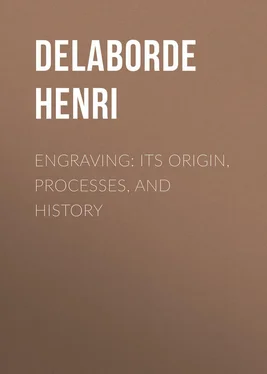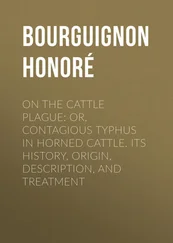Henri Delaborde - Engraving - Its Origin, Processes, and History
Здесь есть возможность читать онлайн «Henri Delaborde - Engraving - Its Origin, Processes, and History» — ознакомительный отрывок электронной книги совершенно бесплатно, а после прочтения отрывка купить полную версию. В некоторых случаях можно слушать аудио, скачать через торрент в формате fb2 и присутствует краткое содержание. Жанр: foreign_antique, foreign_prose, на английском языке. Описание произведения, (предисловие) а так же отзывы посетителей доступны на портале библиотеки ЛибКат.
- Название:Engraving: Its Origin, Processes, and History
- Автор:
- Жанр:
- Год:неизвестен
- ISBN:нет данных
- Рейтинг книги:5 / 5. Голосов: 1
-
Избранное:Добавить в избранное
- Отзывы:
-
Ваша оценка:
- 100
- 1
- 2
- 3
- 4
- 5
Engraving: Its Origin, Processes, and History: краткое содержание, описание и аннотация
Предлагаем к чтению аннотацию, описание, краткое содержание или предисловие (зависит от того, что написал сам автор книги «Engraving: Its Origin, Processes, and History»). Если вы не нашли необходимую информацию о книге — напишите в комментариях, мы постараемся отыскать её.
Engraving: Its Origin, Processes, and History — читать онлайн ознакомительный отрывок
Ниже представлен текст книги, разбитый по страницам. Система сохранения места последней прочитанной страницы, позволяет с удобством читать онлайн бесплатно книгу «Engraving: Its Origin, Processes, and History», без необходимости каждый раз заново искать на чём Вы остановились. Поставьте закладку, и сможете в любой момент перейти на страницу, на которой закончили чтение.
Интервал:
Закладка:
The artist who makes use of this method has to scoop no laborious furrows. He draws with the needle, on a copper plate covered with a coating of varnish, suggestions of form as free as the strokes of pen or pencil. At first these strokes only affect the surface of the copper where the needle has freed the plate from varnish. But they become of the necessary depth as soon as a certain quantity of corrosive fluid has been poured on to the plate, which is surrounded by a sort of wax rampart. For a length of time proportioned to the effect intended, the acid is allowed to bite the exposed parts of the metal, and when the plate is cleaned proofs can be struck off from it.
With the exception of such few modifications as characterise prints in the scraped or scratched manner, called "sgraffio," and in the stippled manner, the methods of engraving just mentioned are all that have been used in Europe from the end of the Middle Ages up to about the second half of the seventeenth century. We need not, therefore, at present mention more recent processes, such as mezzotint, aquatint, &c., each of which we shall touch upon at its proper place in the history of the art. Before proceeding with this history, let us try to recollect the facts with which we have prefaced it; and, as chronological order proscribes, to differentiate and classify the first productions of relief engraving.
However formal their differences of opinion on matters of detail, technical writers hold as certain one general fact. They all agree in recognising that the methods of relief engraving were practised with a view to printing earlier than the method of intaglio. What interval, however, separates the two discoveries? At what epoch are we to place the invention of wood engraving? or if the process, as has been often alleged, is of Asiatic origin, when was it brought into Europe? To pretend to give a decisive answer to these questions would be, at least, imprudent. Conjectures of every sort, and even the most dogmatic assertions, are not wanting. But the learned have in vain evoked testimony, interpreted passages, and drawn conclusions. They have gone back to first causes, and questioned the most remote antiquity; they have sometimes strangely forced the meaning of traditions, and have too often confounded simple material accidents with the evidences of conscious art properly so called. Yet the problem is as far from solution as ever, and, indeed, the number and diversity of opinions have up till now done little but render conviction more difficult and doubt more excusable.
Our authorities, for instance, are not justified in connecting the succession of modern engravers with those men who, "even before the Deluge, engraved on trees the history of their times, their sciences, and their religion." 2 2 Papillon, "Traité de la Gravure en Bois," 1766, vol. i., ch. 1.
Nor is the mention by Plutarch of a certain almost typographical trick of Agesilaus, King of Sparta, excuse enough for those who have counted him among the precursors of Gutenberg. It is by no means impossible that Agesilaus, in a sacrifice to the gods on the eve of a decisive battle may have been clever enough to deceive his soldiers, by imprinting on the liver of the victim the word "Victory," already written in reverse on the palm of his hand. But in truth such trickery only distantly concerns art; and if we are to consider the Greek hero as the inventor of printing, we must also allow that it has taken us as long as eighteen centuries to profit by his discovery.
We shall therefore consider ourselves entitled to abandon all speculations on the first cause of this discovery in favour of an exclusive attention to such facts as mark an advance from the dim foreshadowing of its future capabilities to the intelligent and persevering practice of the perfected processes of the art. We shall be content to inquire towards what epoch this new method, the heir of popular favour, supplemented the old resources of the graphic arts by the multiplication of engravings in the printing press. And we may therefore spare ourselves the trouble of going back to doubtful or remote information, to archæological speculations, more or less excused by certain passages in Cicero, Quintilian, and Petronius or by a frequently quoted phrase of Pliny on the books, ornamented with figures, that belonged to Marcus Varro. 3 3 Pliny, "Hist. Nat.," xxxv., c. 2.
Moreover in examining the historical question from a comparatively modern epoch only, we are not certain to find for ourselves, still less to provide for others, perfectly satisfactory answers. Reduced even to these terms, such a question is complicated enough to excuse controversy, and vast enough to make room for a legendary as well as a critical view of the case. Xylography, or block printing, which may be called the art of stamping on paper designs and immovable letters cut out on wood, preceded without doubt the invention of printing in movable metal characters. Some specimens authentically dated, such as the "St. Christopher" of 1423, and certain prints published in the course of the following years, prove with undeniable authority the priority of block printing. It remains to be seen if these specimens are absolutely the first engraved in Europe; whether they illustrate the beginning of the art, or only a step in its progress; whether, in one word, they are types without precedent, or only chance survivals of other and more ancient styles of wood engraving.
Papillon, in support of the opinion that the earliest attempts took place at Ravenna before the end of the thirteenth century, brings into court a somewhat doubtful story. Two children of sixteen, the Cavaliere Alberico Cunio and his twin sister Isabella, took it into their heads in 1284 to carve on wood "with a little knife," and to print by some process seemingly as simple a series of compositions on "the chivalrous deeds of Alexander the Great." The relations and friends of the two young engravers, Pope Honorius IV. amongst others, each received a copy of their work. After this no more was heard of the discovery till the day when Papillon miraculously came across evidences of it in the library of "a Swiss officer in retirement at Bagneux." Papillon unfortunately was satisfied with merely recording his discovery. It never occurred to him to ensure more conclusive publicity, nor even to inquire into the ultimate fate of the prints he only had seen. The collection of "The Chivalrous Deeds of Alexander the Great" again vanished, and this time not to reappear. It is more prudent, in default of any means of verification, to withhold our belief in the precocious ability of the Ravenna twins, their xylographic attempts, and the assertions of their admirers, although competent judges, such as the Abbé Zani 4 4 "Materiali per servire alla Storia dell' Incisione," &c., p. 83 and following.
and after him Emeric David, have not hesitated to admit the authenticity of the whole story.
The learned Zani had, in truth, his own reasons for taking Papillon at his word. Had the story tended to establish the pre-existence of engraving in Germany, he would probably have investigated the matter more closely, and with a less ready faith. But the glory of Italy was directly at issue, and Zani honest though he was, did not feel inclined to receive with coldness, still less to reject, testimony which, for lack of better, might console his national self-respect, and somewhat help to avenge what the Italians called "German vanity." Pride would have been a better word, for the pretensions of Germany with regard to wood engraving are based on more serious titles and far more explicit documents than the one discovered by Papillon, and recklessly passed on by Zani. Heinecken and the other German writers on the subject doubtless criticise in a slightly disdainful manner, and with some excess of patriotic feeling. For all that, they defend their opinions by documents, and not by mere traditions; and if all their examples are not quite evidently German, those which are not should in justice be attributed to Flanders, or to Holland, and by no means to Italy.
Читать дальшеИнтервал:
Закладка:
Похожие книги на «Engraving: Its Origin, Processes, and History»
Представляем Вашему вниманию похожие книги на «Engraving: Its Origin, Processes, and History» списком для выбора. Мы отобрали схожую по названию и смыслу литературу в надежде предоставить читателям больше вариантов отыскать новые, интересные, ещё непрочитанные произведения.
Обсуждение, отзывы о книге «Engraving: Its Origin, Processes, and History» и просто собственные мнения читателей. Оставьте ваши комментарии, напишите, что Вы думаете о произведении, его смысле или главных героях. Укажите что конкретно понравилось, а что нет, и почему Вы так считаете.












